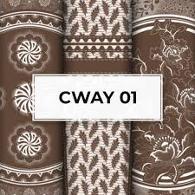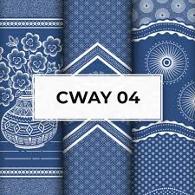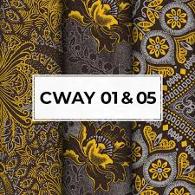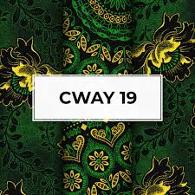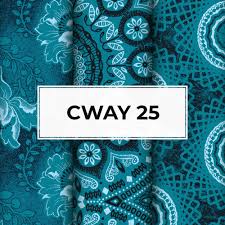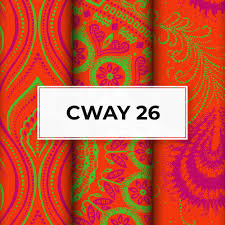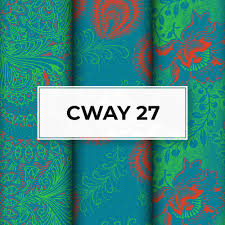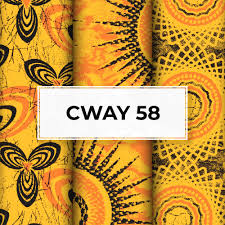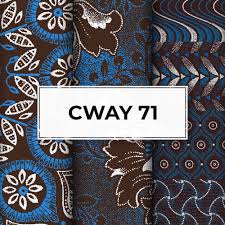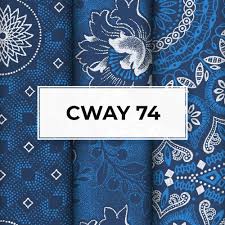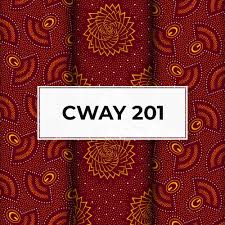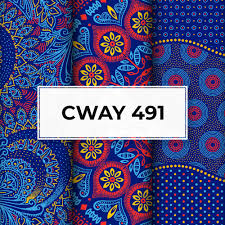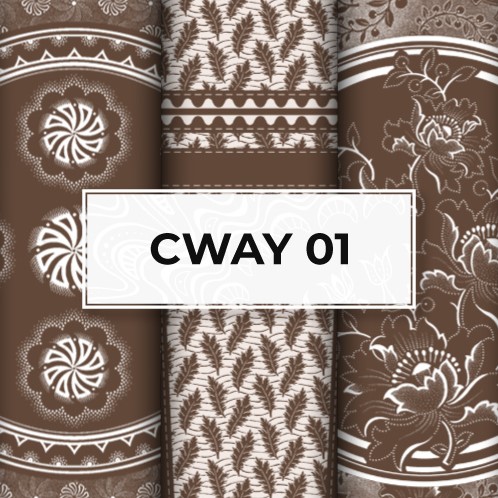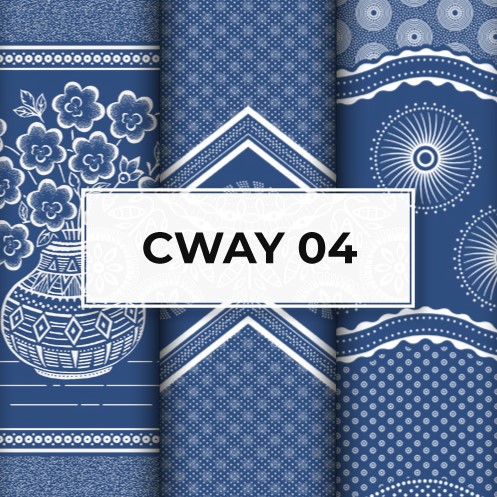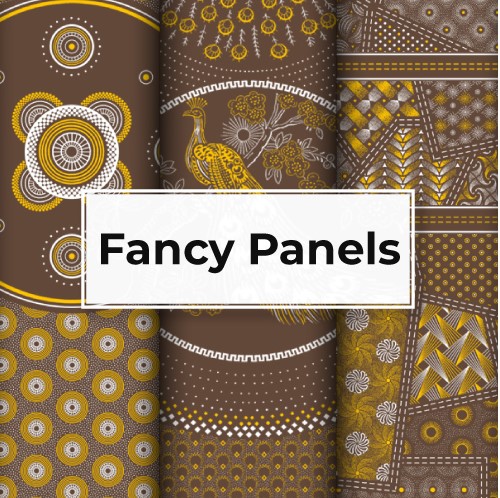
Shweshwe, also known as, ‘shoeshoe’ or ‘isishweshwe’ is a printed cotton
fabric that is manufactured in South Africa. The formal name for
shweshwe is ‘indigo-dyed discharge printed fabric’. It is a trademarked
fabric and the largest producer of shweshwe is the Three Cats brand,
produced by Da Gama Textiles in the Zwelitsha township outside King
William’s Town in the Eastern Cape of South Africa. It is printed onto
cotton, which is grown locally, also in the Eastern Cape. Shweshwe is produced by feeding cotton fabric through a series of copper
rollers that have patterns etched into them. A weak acid solution is
fed onto the fabric, bleaching out the distinctive intricate white
designs to create a stunning range of attractive prints.
The story goes that in 1840 French missionaries presented the then
ruler, King Moshoeshoe, with indigo cloth, after which it was then
referred to locally as shoeshoe and eventually Shweshwe. Shweshwe was originally only available in blue, thus known as ‘indigo
cloth’ and it was brought to South Africa in the mid 1800s by German
immigrants. This is why it is sometimes referred to as ‘German print’.
It has been printed in many countries around the world, beginning in
European countries such as Czechoslovakia and Hungary, and later England
in the 1930s. Shweshwe has been worn by South African women since the
1800s, and the print continues to appeal across Africa and beyond.
The fabric is used to this day in traditional ceremonies in rural areas, and worn by Xhosa, Sotho, Tswana and Pedi peoples of Southern Africa especially during wedding ceremonies as bridal gowns and bridesmaid’s dresses.The original shweshwe fabric has distinct characteristics in smell, touch and even taste. If you were to taste it you would notice a saltiness. It also has a distinct smell and is quite stiff until washed. It is advised that you always wash the fabric before sewing as this removes the starch and stiffness of the fabric. You will also find that there is a branded manufacturer’s stamp on the reverse of the fabric to show the origins of the Shweshwe. Historically, starch was used to preserve the fabric when it was transported on long sea voyages from the UK to South Africa to prevent it getting damaged by the damp. This quirky characteristic has been retained even with local production.
Unlike many standard width fabric of 115cm or 150cm, Shweshwe is 90cm wide, which is important to note when it comes to buying your fabric and planning your next project. It is 100% cotton, weighs 158g after washing and should be washed with similar colours and at 40ºC to ensure that the colours do not run. The designs usually consist of distinct geometric patterns usually with no more than three to four colours. Nevertheless, you will still find some more abstract designs, motifs and even florals. Limited designs are also released to commemorate certain events or to recognise important people. For example, you might have come across the Nelson Mandela shweshwe. It is from the ‘Madiba’ range by Da Gama to celebrate the life of the former president of South Africa. Although Shweshwe originally, only came in the indigo colour range, many new colourways have been introduced over time, with hot pinks, sunny oranges and yummy greens now available. View our full range of original Shweshwe fabrics below.
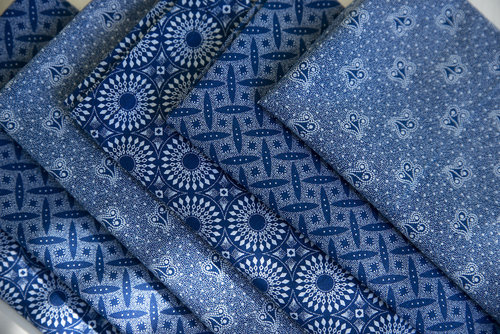
The Original Indigo Shweshwe.
The fabric is used to this day in traditional ceremonies in rural areas, and worn by Xhosa, Sotho, Tswana and Pedi peoples of Southern Africa especially during wedding ceremonies as bridal gowns and bridesmaid’s dresses.The original shweshwe fabric has distinct characteristics in smell, touch and even taste. If you were to taste it you would notice a saltiness. It also has a distinct smell and is quite stiff until washed. It is advised that you always wash the fabric before sewing as this removes the starch and stiffness of the fabric. You will also find that there is a branded manufacturer’s stamp on the reverse of the fabric to show the origins of the Shweshwe. Historically, starch was used to preserve the fabric when it was transported on long sea voyages from the UK to South Africa to prevent it getting damaged by the damp. This quirky characteristic has been retained even with local production.
Unlike many standard width fabric of 115cm or 150cm, Shweshwe is 90cm wide, which is important to note when it comes to buying your fabric and planning your next project. It is 100% cotton, weighs 158g after washing and should be washed with similar colours and at 40ºC to ensure that the colours do not run. The designs usually consist of distinct geometric patterns usually with no more than three to four colours. Nevertheless, you will still find some more abstract designs, motifs and even florals. Limited designs are also released to commemorate certain events or to recognise important people. For example, you might have come across the Nelson Mandela shweshwe. It is from the ‘Madiba’ range by Da Gama to celebrate the life of the former president of South Africa. Although Shweshwe originally, only came in the indigo colour range, many new colourways have been introduced over time, with hot pinks, sunny oranges and yummy greens now available. View our full range of original Shweshwe fabrics below.

The Original Indigo Shweshwe.
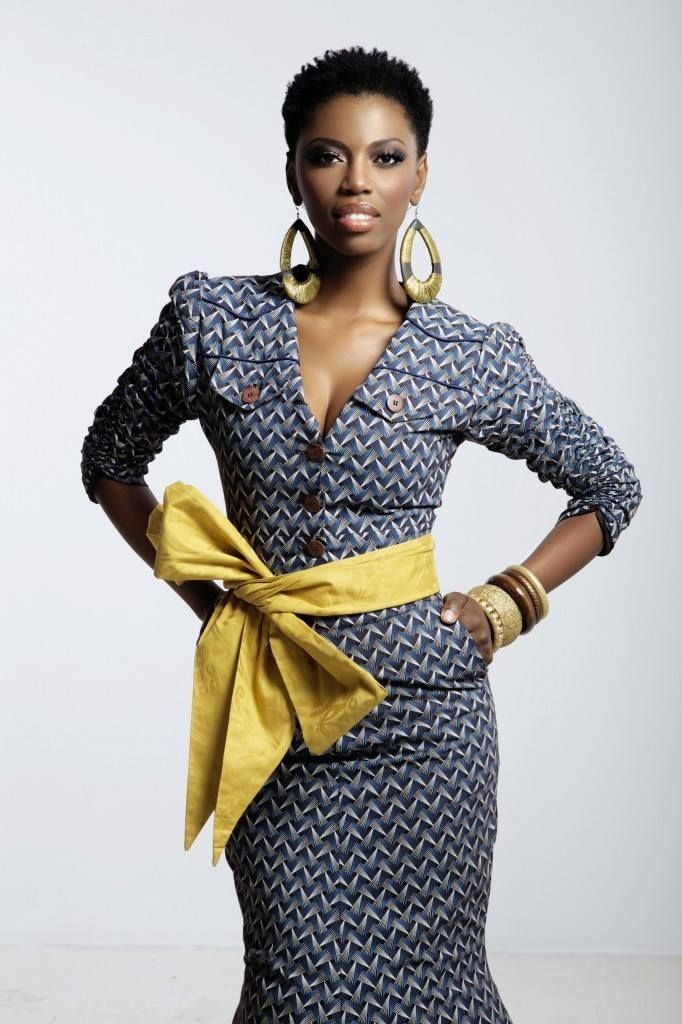

CLICK ON THE IMAGES BELOW TO VIEW EACH PRODUCT CATALOGUE


